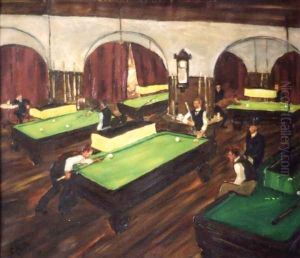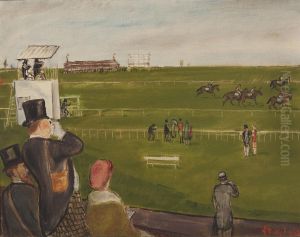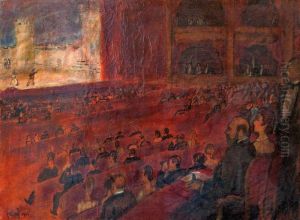Jeno FEIKS Paintings
Jenő Feiks was a Hungarian artist known for his contributions in the realm of painting and graphic design during the early to mid-20th century. Born in 1903 in Hungary, Feiks developed an interest in art at a young age, which was fostered through his academic pursuits. He studied at the Hungarian Academy of Fine Arts in Budapest, where he honed his skills and established a foundation for his artistic career.
In the years following his education, Feiks became involved in the vibrant art scene of Budapest, which was a melting pot of various artistic styles at the time, including Art Nouveau, Expressionism, and later, Modernism. His early works were influenced by these movements, and he began to develop a unique style that combined elements of traditional Hungarian art with contemporary European trends.
Feiks's work was characterized by a rich use of color and a focus on capturing the essence of his subjects, whether they were landscapes, still lifes, or portraits. He was adept in a variety of mediums, including oil painting and watercolor, but also explored printmaking and illustration. His graphic works often featured bold lines and a clear, communicative style that made them popular for posters and book illustrations.
Despite the challenges posed by the political upheavals of the 20th century, including both World Wars and the changing regimes in Hungary, Feiks remained dedicated to his art. He navigated the shifting cultural landscape by adapting his style and themes to reflect the times. During the interwar period and following World War II, his work often conveyed a sense of resilience and hope amidst adversity.
Jenő Feiks's artistic legacy is marked by his versatility and his commitment to capturing the human experience through his art. His works are collected and exhibited in various institutions across Hungary and Europe. Although not widely recognized internationally, his contributions to Hungarian art remain significant. Feiks passed away in 1962, leaving behind a body of work that continues to be studied and appreciated for its emotional depth and aesthetic beauty.


